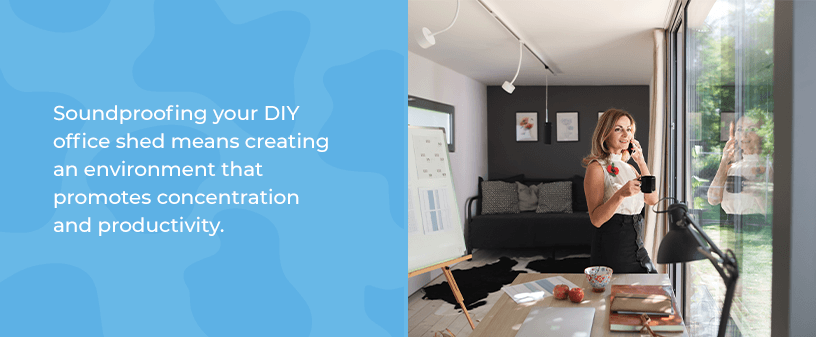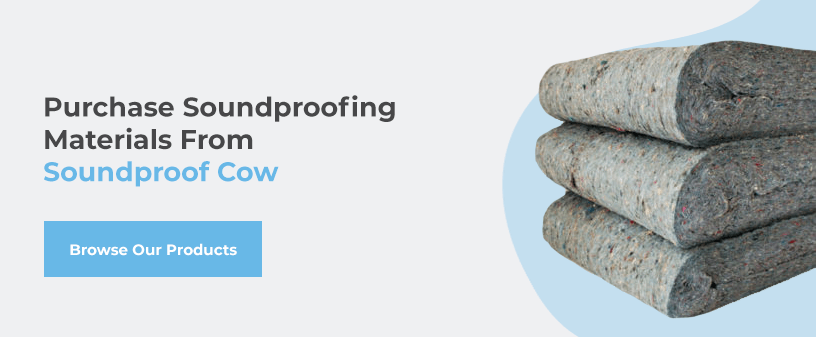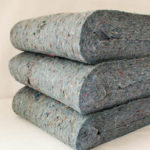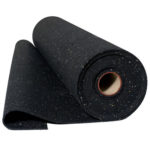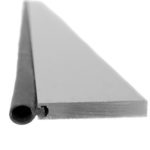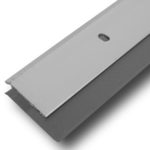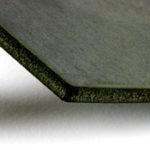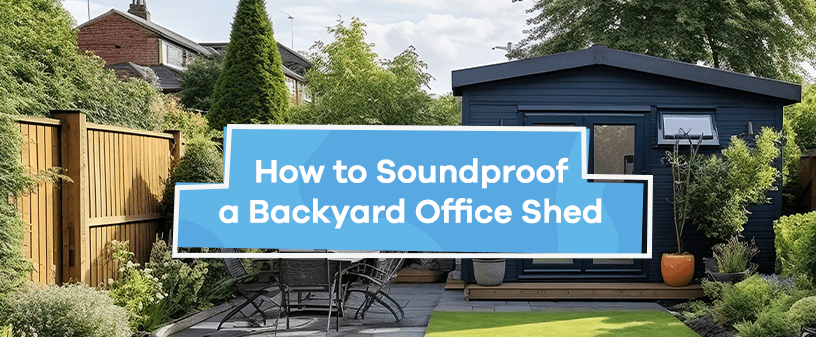
If you work from home or need an office in your home, a backyard office shed is a great choice. A backyard office shed is a functional workspace that contributes to a healthy work-life balance, giving you a separate area to be productive, away from the distractions of the main house.
You can soundproof your new office space if you want to kick things up a notch. This investment turns your setup into an environment where you can enjoy deep workflows and confidently dial into conference calls with reduced background noise. If you are wondering how to soundproof your backyard office shed, we have you covered.
Soundproofing a Backyard Office Shed
Your new office space should be a place where you can focus and get work done! Here’s how to build a backyard office shed that’s soundproof.
But First: Some Design Tips
To prepare for the building and soundproofing phase of your new backyard office, you will need to plan the design. Consider how you will use the shed to determine how big it needs to be. Will you need a desktop computer and a printer? A couch or an armchair? Instruments or music equipment? How much storage space is necessary? A good-sized office shed is 120 square feet, offering enough space for your desk, a small sofa and a mini fridge to keep some food and refreshments close.
Remember that safety is crucial throughout this process. Adhere to the manufacturer’s instructions to ensure you have a successful build. Also, check which local building codes before building and gather the necessary permits that align with your backyard office plans.
How to Soundproof a Backyard Office Shed
Once your backyard office shed is set up, your peaceful and productive workspace is just a soundproofing session away. Here’s a good starting point to focus your efforts:
- Seal gaps and cracks: Inspect the build, especially the areas around windows, doors, and wall joints. Seal any small openings with acoustic sealant, weatherstripping or caulk.
- Soundproof ventilation: Consider acoustic louvers or soundproof vent covers for proper ventilation with minimal sound transmission.
- Add insulation: Install soundproof insulation in the shed’s walls and ceiling. Materials like Quiet Batt® soundproofing Insulation are effective in this application. As an added bonus, they help regulate the room’s internal temperature.
- Consider acoustic curtains: Acoustic curtains or blinds can block additional noise. This is especially handy if you have limited control over excessive outside noise, like traffic.
- Seal outlets and switches: Acoustic gaskets or sealants can prevent sound leakage that transmits through electrical outlets and switches.
- Add a rug or carpet: A thick rug or carpet with a sound-absorbing underlay offers a great underfoot feel while absorbing noise from footsteps and other echoes in your office space.
- Soundproof door sweep: Add a door sweep with an acoustic rating to your door, sealing the gap between the door and the floor.
A number of add-ons can improve your soundproofing task, so you’ll want to conduct some sound tests to identify any leaks. With this knowledge, you can adjust or add new soundproofing materials until you have the level of quietness you want.
Soundproofing Materials to Consider
Sound escapes through openings like doors and any gaps in the walls and roof. These openings allow sound waves to travel freely in and out of your office shed, making it less soundproof. When setting up an insulated shed office, you’ll want to minimize these openings and seal any gaps. You can use materials that absorb or block sound, like acoustic foam panels and weatherstripping.
Soundproofing your DIY office shed means creating an environment that promotes concentration and productivity. Doing so ensures you have a peaceful environment in which to work, shielded from traffic noise, barking dogs or neighborhood activities.
Base the soundproofing materials you choose on their sound-absorbing and sound-blocking properties:
- Acoustic insulation: Minimizes sound transmission.
- Mass-loaded vinyl barriers: Adds density to surfaces.
- Weatherstripping: Seals small gaps around doors to prevent noise leakage.
- Acoustic panels: Reduces noise levels and eliminates echoes in a room by absorbing sound reflections.
How to Soundproof a Door
Your biggest task will be to soundproof the door, as the bulk of external noise comes through the door. If a solid-core door that absorbs sound more than standard hollow-core doors is outside your budget, you can soundproof a door yourself.
Begin by attaching weatherstripping around the door frame to seal any gaps. Next, apply adhesive-backed foam along the doorstop and frame to create an airtight seal when the door is closed. For added insulation, consider using acoustic panels or blankets, which you can fix to the door interior with a strong adhesive. You can take things one step further by using soft-close hinges that reduce door slamming noise.
How to Soundproof Walls
Start with sealing gaps or cracks in the walls with caulk to prevent sound leakage. Install resilient channels onto the studs, creating a gap between the wall and the framing. These materials help to minimize sound vibrations passing through. Next, add dense mineral wool insulation in the stud cavities to absorb sound waves. Attach mass-loaded vinyl barriers or soundproof drywall over the insulation for an added noise-blocking layer.
Minimizing the number of wall penetrations for outlets and fixtures will also help to keep noise levels out of your new home office. An aesthetic way to boost your soundproofing efforts includes adding bookshelves, fabric-wrapped panels or acoustic art panels to the interior walls of the office shed to absorb further and diffuse sound.
How to Soundproof a Ceiling
Like soundproofing walls, the ceiling needs a layer of dense material, like mass-loaded vinyl barriers or acoustic mineral wool, to absorb overhead soundwaves and reduce echoing inside your office. To minimize vibrations, ensure that you seal all gaps and cracks and install those resilient channels to create an air gap between the shed structure and the ceiling.
How to Soundproof a Floor
Lay down a resilient underlayment to absorb impact and vibrations, then apply mass-loaded vinyl sheets to add density and prevent sound transmission. You can install a floating floor system using soft materials like cork or plastic for additional insulation. These steps create a barrier against airborne and impact noises, ensuring a tranquil work environment that encourages deep work.
Purchase Soundproofing Materials From Soundproof Cow
Effective soundproofing involves careful attention to detail and strategically placing sound-absorbing or blocking materials in the office shed.
The team at Soundproof Cow has over 20 years of experience working with audio engineers and DIYers alike, and we can help with your soundproofing needs. Reach out to us for a personalized quote and get expert advice on your home office shed plans!


